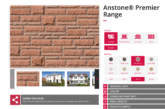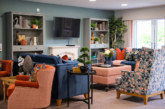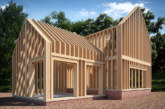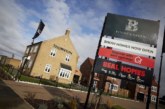
Rob Woolston, Director at multi-disciplinary design practice rg+p, encourages housebuilders and developers to think ‘beyond the building’ and consider the wider public realm to create the most successful residential developments.
Quite rightly, housebuilders spend a lot of time and effort considering fixtures and fittings, flooring and finishes; all of which are proven to add value and achieve faster sales. However, there is no reason for this attention to detail to stop at the front door.
For residents and visitors, the surrounding street is where a development makes its first impression. Good streets equal good places, combining a well-designed arrangement of homes with hard and soft landscaping that makes up the public realm. Especially important here are the actual property thresholds and boundaries e.g. railings or hedgerows, and these should be implemented as part of a coherent, development-wide strategy.
Equally affecting a street’s character is parking design. While residents value the convenience of parking close to their front doors, good developments include a variety of parking e.g. along streets and across groups of homes; reducing the overall dominance of cars. Alongside this, a comprehensive landscape strategy should be adopted, considering how individual plot landscaping works as part of a street hierarchy e.g. via the inclusion of street trees or soft landscaping between driveways or parking spaces. Landscaping is far too often an afterthought or simply seen as a planning condition, but a development can really unravel without it; especially when housebuilders look to achieve the ‘wow factor’ for a showhome or sales area.
Navigation aids
A development’s navigation is also critical. At a plot specific level, seemingly trivial things like positioning of bin or cycle storage and how these might be moved between driveways impacts people’s daily lives so ensuring adequate circulation space is essential. Similarly, the route from the front or back door to the car can sometimes be circuitous so if this can be achieved directly ‘on plot’ this is less detrimental.
In the wider development, clear and logical progression between streets helps navigation. Avoiding too many cul-de-sacs for instance and ensuring plenty of thoroughfares engenders connectivity, especially when linked by open space or parks/play areas. Thinking more widely about the setting of a site and making best use of its natural assets always creates a better place e.g. using existing trees or hedgerows as a focal point. Retaining mature trees within a site or on its boundaries is proven to add value.
None of these considerations are particularly profound but it’s surprising how often they’re not considered at the outset. Taking a more holistic approach and preparing an encompassing site-wide strategy, covering streets, landscaping and boundaries could not only lead to faster planning consents but also more off-plan reservations/sales as people look to buy into a community.
Good urban design adds value and sets the tone for quality, which in turn dictates the rate of sale. Being more mindful of this, we can create places where people take pride in living and ensure these more defined, thoughtful settings leave a lasting legacy.









